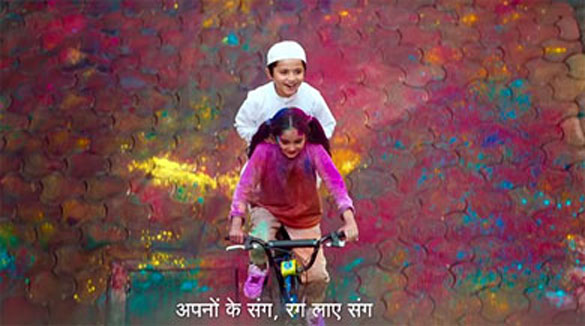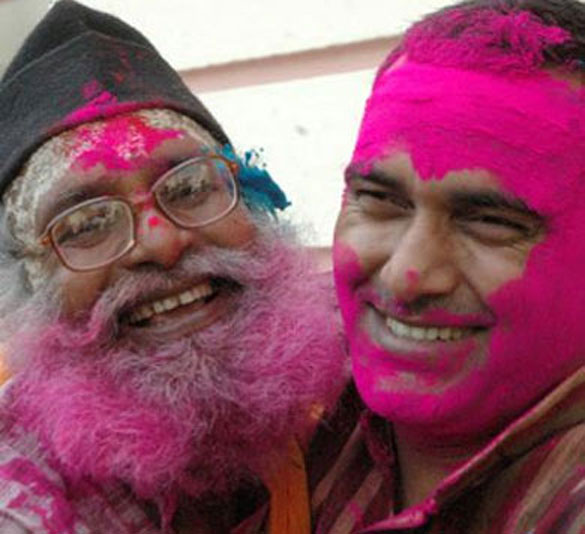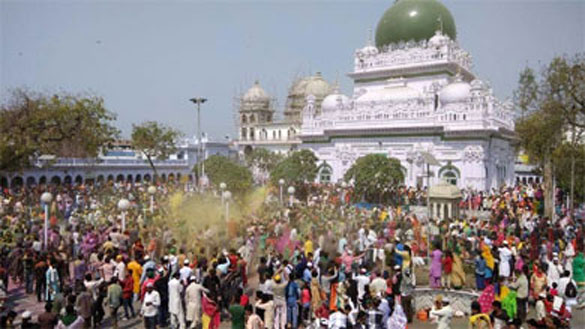
If anyone tried to understand India in its entirety from the prism of a ‘culture friendly Islam’, with all its diversity, festivals, cultural manifestations and artistic expressions, it was the Sufi Mystics who mainly came from Central Asia and some parts of Arabia. Remarkably, these Arab scholars and Persian saints did not attempt to ‘Arabise’ Islam in India, something that today’s self-appointed custodians of Islam are hell-bent on doing. On the contrary, a gamut of mediaeval Muslim scholars including Abu Rayhan al-Biruni, an Iranian historian and polymath during the Islamic Golden Age, author of the first Arabic treatise on Indian History (Kitab ul Hind) and popularly known as the “founder of Indology”, made remarkable contributions to exploration and promotion of the Indian civilization and its vibrant cultural heritage.
In this context, some Sufi Mystics and Scholars should find special mention, because of their practical endeavours to uphold this historic movement. They not only wrote books about the history and culture of India in Arabic, Turkish and Persian languages but also celebrated the various festivals of India including Diwali, Basant Panchami and Holi in order to strengthen the composite culture and social fabric of the country.
While the famous Sufi saint of Delhi, Hazrat Nizamuddin Aulia and his closest disciple Ameer Khusrau started a beautiful tradition of the Sufi Basant at their Khanqah or shrine (known as Dargah Hazrat Nizamuddin Aulia), Dewa Sharif in Uttar Pradesh is India’s famous Dargah where Holi is celebrated as “Eid-e-Gulabi” with no less fervour than in other Indian faith traditions.
The holy Qur’an says:
صِبْغَةَ اللَّهِ ۖ وَمَنْ أَحْسَنُ مِنَ اللَّهِ صِبْغَةً ﴿١٣٨﴾
(Allah’s colouring! And who gives better colouring than Allah?” Surah al-Baqarah: 138)
From the above verse in the Qur’an, some Sufi Mystics derived a very interesting understanding of the colours and their significance in the Indian setting. They infer that Colours should have no religious distinctions, nor should they have any caste or creed. But rather, they should be celebrated as the glaring signs of God. Thus, they took the Indian festival of Holi as an occasion which assures us that all the faces should be painted in the beautiful colours and that all colours belong to Allah.
Thus, Sufis were the first to conceive the Festival of Colours in Islam as “Eid-e-Gulabi” which is known in the modern Arabic as Eid-ul-Alwan. While in the Hindu tradition, Holi is celebrated as the festival of Divine Love, and the Festival of Spring, which celebrates the eternal and divine love between Radha and Krishna, the Sufi notion of Holi is more nuanced. It seeks to instil our collective spiritual consciousness in India. For decades, Muslims along with the Hindu devotees come together to celebrate the Sufi Holi as Eid-e-Gulabi at the sanctum of Dewa Sharif. A custodian of this Dargah, Ghani Shah, asserts that it was Waris Piya who exhorted his disciples to celebrate the Holi and show respect to every Indian religion as a spiritual foundation based on the mutual feelings of love and respect.
Born into the 26th generation of Imam Hussain, Sarkar Waris-e-Pak, more popularly known as ‘Waris Piya’ was the founder of Warsi Silsila in modern period of Indian Sufism. As a learned successor to the prominent Sufi order — Qadriyya-Razzakiyya, and well versed in classical Islamic sciences, Waris Piya was a widely travelled Sufi master for people from across the country, as well as the different countries, irrespective of faith and creed.
Noted Warisi scholar, Mr. Ghafur Shah writes in his book: “The Blessed Lord Haji Syed Waris Ali Shah,” that Waris Piya undertook the Hajj pilgrimage several times, and also paid extensive visits to the West, especially the European countries, including Germany, England and Turkey. During his travels to Europe, Waris Piya also met the Sultan of Turkey and Bismarck of Berlin, and had an audience with Queen Victoria in England.

A close relative in Waris Pak’s family lineage Prof. Wahajuddin Alwi, former Dean of the Faculty of Humanities and Languages, told this writer: “Since Waris Piya wanted people in India to transcend religious/sectarian divides, he participated in Hindu festivals like Holi. His non-Muslim Mureeds and regular disciples included Raja Udyat Narayan Sing, raja of Oudh, Thakur Pancham Singh Talukdar of Eta, Pandit Deendaar Shah of Indore, Sahaj Ram Dixit, Thakur Grur Mohan Singh, a Zamindar of Bhagalpur. They were spiritually in parallel with his Muslim bureaucrat Mureeds such as governor general Ghulam Mohammad and Justice Sharfuddin.”
Another Sufi Mystic who celebrated the Holi in his own spiritual way was the 18th-century popular Punjabi poet Bulle Shah. He composed beautiful couplets invoking the spiritual blessings from Allah and his holy Prophet (pbuh) for playing the Holi, as can be seen below:
Hori Kheluungii, Kah Bismillah.
Naam Nabi Ki Ratn Charii,
Buund Pari Allah Allah.
(I start playing Holi with the recitation of Bismillah. Covered with the light of Prophet’s name, and showered by blessings of Allah)
Not only the Sufi saints of the Indian subcontinent, in fact the Mughal emperors celebrated the Holi with great gusto. Prominent Muslim historian Zakaullah writes how the founder of the Mughal Empire Zahiruddin Muhammad Babur, used to take great interest in the Holi celebrations. Similarly, Emperor Akbar would collect beautiful squirts and syringes of different sizes throughout the year in anticipation. This was one of the rare occasions when Akbar would come out from his fort and play Holi with even the commoners, as Abul Fazal writes in Ain-e Akbari. Furthermore, it is mentioned in Tuzk-e-Jahangiri that Jahangir also celebrated Holi and organised musical gatherings.
Even Aurangzeb Alamgir, who is otherwise known as an orthodox and intolerant Muslim ruler, appreciated the colours of Holi. It is surprising to note what Lane Poole writes in his book, “Aurangzeb and the Decay of the Mughal Empire”:
During his (Aurangzeb’s) time, there used to be several groups of Holi singers who besides reciting libertine lyrics also indulged in salaciousness, accompanied by various musical instruments.”

Bahadur Shah Zafar, the last Mughal Emperor allowed his Hindu ministers to smear his forehead with gulal on Holi. Historic Urdu daily “Jaam-e-Jahanuma”, reported in 1844 that during the days of the Mughal Emperor Bahadur Shah Zafar, special arrangements were made for those who celebrated Holi.
Bahadur Shah Zafar, who was also an Urdu poet par excellence, wrote these fabulous verses on the Festival of Colours which are sung as a part of the Phaag (folk songs of Holi):
Kyo Mo Pe Rang Ki Maari Pichkaari
Dekho Kunwar Ji Doongi Mein Gaari
(Why drench me with colour spray,)
Now my prince, I will swear at you)
Bahut Dinan Mein Haath Lage Ho Kaise Jane Doon
Aaj Phagwa To Son Ka Tha Peeth Pakad Kar Loon.
(After long have I’ve got my hands on you, how will I let you go?
Today is Holi, and perfect time to catch hold of you)
Much against the common perception among today’s Muslims in India, these Muslim scholars, saints and emperors believed that their religion would not be affected by the celebration of this Indian festival in a peaceful and permissible manner. Who says Holi is a Hindu festival? asks Munshi Zakaullah in his book “Tarikh-e-Hindustani”.
A regular columnist with NewAgeIslam.com Ghulam Rasool Dehlvi is an Alim and Fazil (classical Islamic scholar). Having graduated from a leading Islamic seminary of India, Jamia Amjadia Rizvia (Mau, U.P.), he is now pursuing his PhD from Jamia Millia Islamia, New Delhi.
Courtesy: New Age Islam